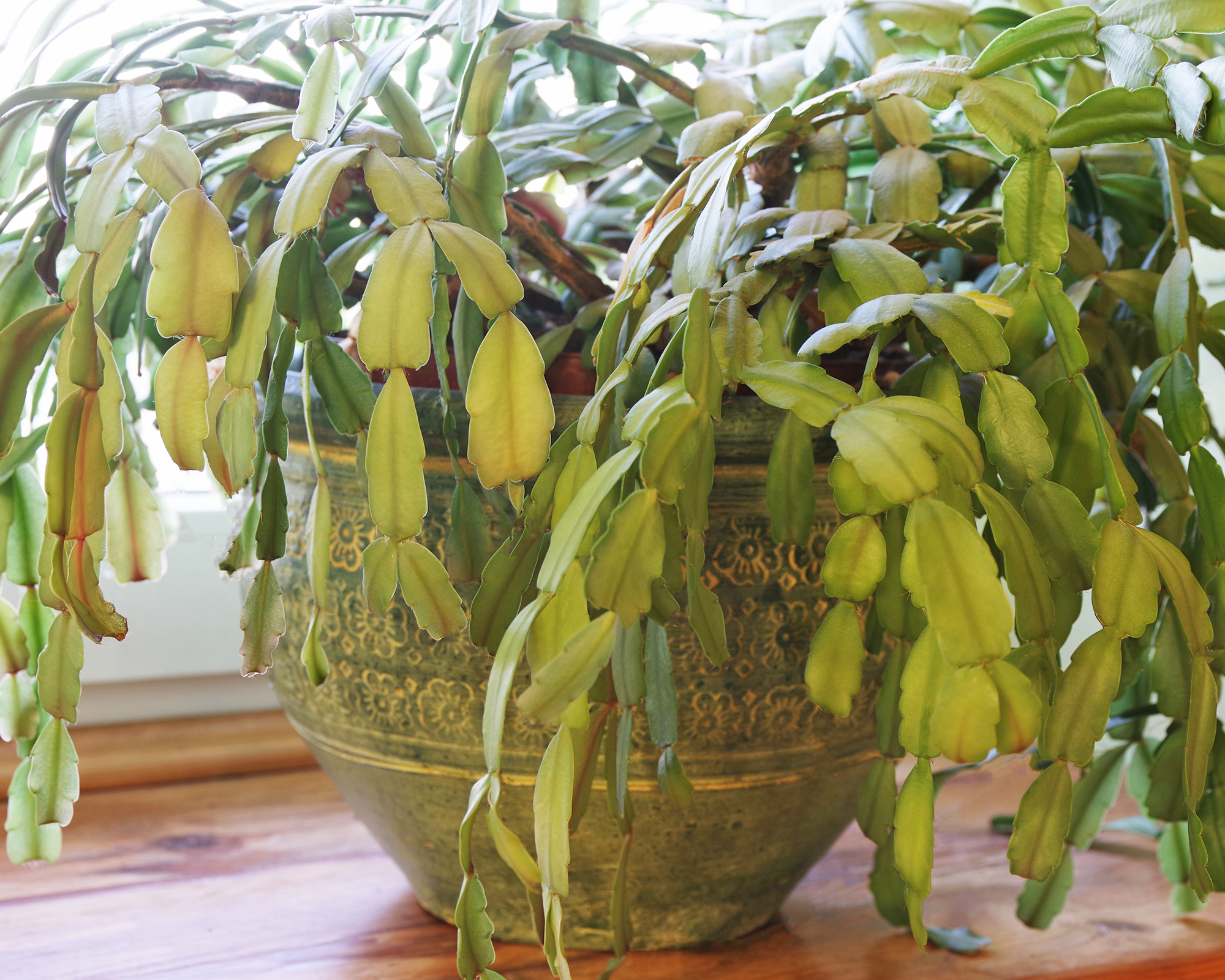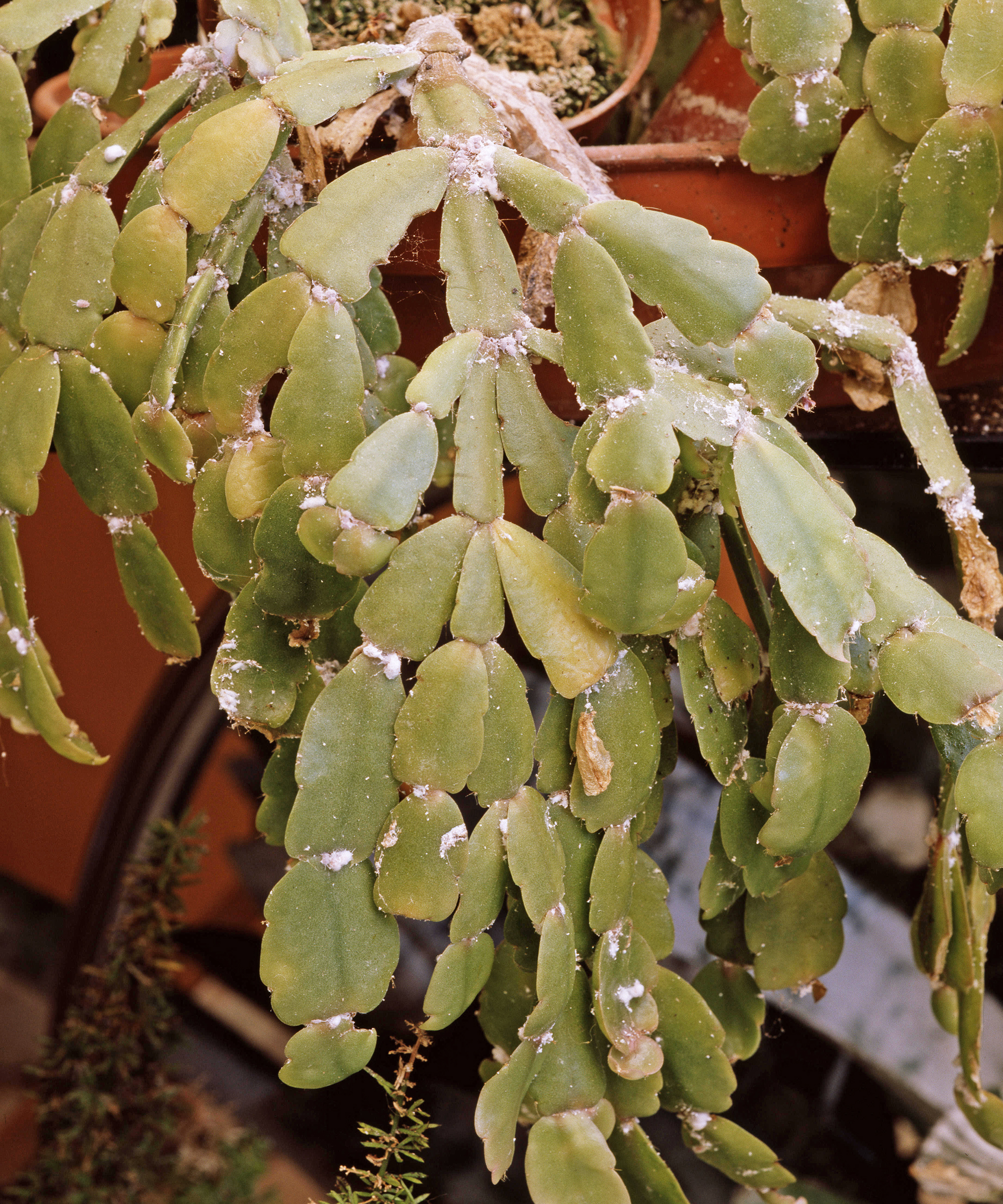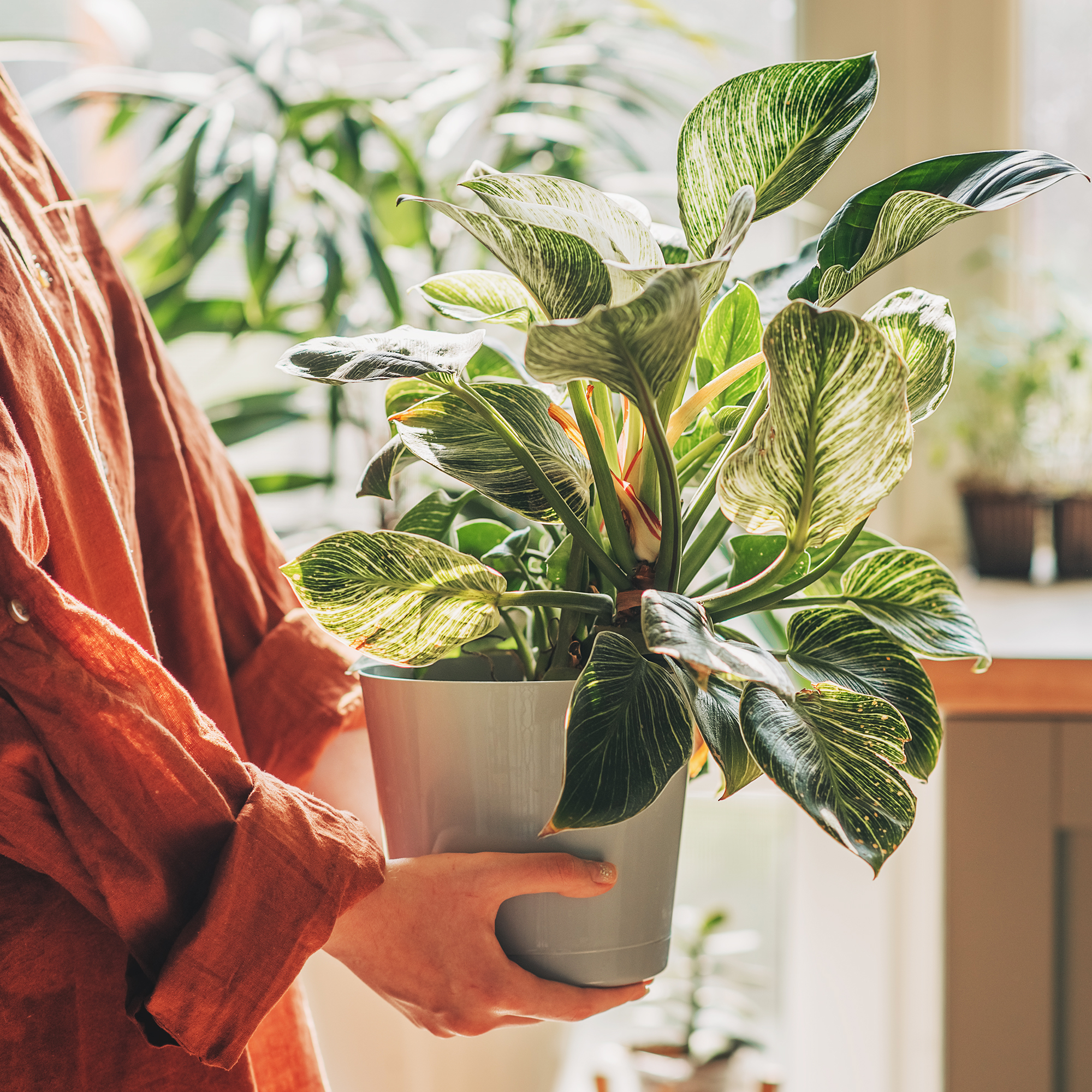
With proper care, a Christmas cactus can live for up to a century but even these hardy plants aren’t without their share of pests. Luckily bugs in Christmas cactus are a rarity and generally not detrimental to the plant – although certainly they are an annoyance to the grower.
Like most common Christmas cactus problems, pests can be managed through a proper care routine, as a healthy plant is a resilient plant. While these plants are generally low-maintenance, following their specific Christmas cactus care requirements makes all the difference.
Christmas cacti are epiphyte plants native to Brazillian rainforests that grow on trees and get water and nutrients from the surrounding environment. In their natural habitat and as houseplants, they are fairly immune to pests; however, they can be afflicted with common pests such as scale, mealybugs, gnats, thrips, and spider mites.
In the event your plant becomes infested, what can you do? Firstly, take heart – most Christmas cactus insects are easily eliminated. Keep reading to learn how to get rid of common pests. This advice can also be applied to the other types of holiday cactus, as Thanksgiving cactus care and Easter cactus care are broadly similar.
Common Christmas Cactus Pests
Even a well-cared-for plant may become infested with pests, especially if your Christmas cactus lives outside for at least part of the year.
While some pests are obvious, others will present with other symptoms before you notice the cause, such as the Christmas cactus wilting, turning yellow, or dropping leaves. Growth may be stunted and you will find it difficult to make the Christmas cactus bloom.
Here are some of the most common Christmas cactus pests to look out for.
Sign up for the Gardening Know How newsletter today and receive a free copy of our e-book "How to Grow Delicious Tomatoes".

1. Fungus Gnats
Fungus gnats (Bradysia species), the bane of greenhouse growers, are the most common pest of Christmas cacti. While these tiny, flying insects, do not injure the plant their offspring larvae do. The small legless larvae feed on the roots and stems of cacti, leading to infection.
Fungus gnats can be controlled with pesticides specific to these pests. Adults are quite susceptible to most chemical controls. Surface sprays and soil drenches are effective at controlling larvae.
Nematodes can be purchased for use as control of fungus gnats as well. They seek out soil insects and eradicate them with no ill effects to the plant.
Insecticidal soap and sticky traps can also aid in the control of fungus gnats.
Otherwise, avoid overwatering, as gnats are attracted to soggy soil. Christmas cactus watering is a delicate balance and should only be done when the top layer of soil has dried out.
You can also replace the top couple of inches (5cm) of soil where the adult gnats lay eggs and their larvae feed on decaying plant material.
2. Thrips
Thrips (Frankliniella species) are another pest that preys on Christmas cacti. These tiny slender insects feed on young stems and flower buds. The damage caused results in stunted or distorted growth and Christmas cactus buds falling off. Both adults and their young can damage plants.
As well as contorted growing points, look for damage on leaves that appears as white or silver streaks. Heavily infested leaves will appear silvery and brown, and you may observe dark fecal spots.
You can treat the exposed parts of the plant with a natural insecticidal soap or neem oil spray. However, when young thrips hatch they drop into the soil, so you may want to use a systemic houseplant insecticide in the soil to eliminate the infestation.
3. Mealybugs
Mealybugs (Pseudococcus calceolariae, Planococcus citri and others) are an annoying pest, common on indoor plants. Although the tiny bugs on Christmas cactus are tiny, they are easy to spot by the protective cottony masses, which are usually seen at the joints of leaves and stems, or on the undersides of leaves.
The bugs, which suck the sap from the leaves, grow larger as they mature. If left untreated, they leave a sticky substance – honeydew – that attracts mold.
To remove mealybugs, pick them off with a toothpick or soft toothbrush. You can also use a cotton swab dipped in rubbing alcohol but be careful; too much rubbing alcohol may damage the leaves. Dilute it to a ratio of 1:3 of 70% rubbing alcohol to water. If all else fails, you may want to try a systemic insecticide formulated for indoor plants.

4. Root Mealybugs
Root mealybugs (Rhizoecus species) are small pests that feed on cactus roots resulting in yellowing, reduced growth, and eventual death of the plant. The infested roots become clotted with fuzzy, white masses of eggs and female mealybugs.
In the early stages, plants may remain symptomless as the infestation is below the soil line. However, stunted plant growth, wilting, or yellow leaves may be apparent.
The best control method for mealybugs is prevention. Systemic applications of insecticides such as soil drenches can aid in control but are not without risk. Be sure the plant container has adequate drainage and that no saucers are attached to the container as these may result in phytotoxicity. If you choose not to use chemical control, the best measure is to discard infested plants.
5. Scale
Scale insects (Coccomorpha) are tiny, dark brown, round to oval pests whose feeding results in stunted or weakened plants. Scales feed on the cladophylls, the flattened stems or branches of the cactus. They can be difficult to spot in the early stages, but severe infestations can result in yellowing, lack of growth, and plant death.
To treat minor infestations, you can pick off or gently scrub the scale from the leaves and stems. You can also wipe them off with an alcohol-soaked cotton swab or neem oil solution.
Severely infested plants may be treated with a soil drench using a chemical insecticide. Always use chemical controls according to the manufacturer’s directions.

6. Spider Mites
Spider mites (Tetranychidae) are so tiny, they are difficult to see with the naked eye. However, if you see fine webbing or fine speckles on the leaves, you can bet your Christmas cactus is infested with spider mites.
These pests are usually easy to resolve with regular application of insecticidal soap spray. Keep the leaves clean, as mites are attracted by dusty conditions.
7. Other Christmas Cactus Pests
If your Christmas cactus is kept outside for the summer – or even all year round in USDA hardiness zones 9-11 – then plants may become damaged by nibblers like deer, rodents, and rabbits. Even slugs and snails find Christmas cactus delectable.
If larger pests are a problem, you will need to protect the plant with a fence or other mesh cover, or bring it inside to a covered area.
As to slug and snail interest in Christmas cacti, the best way to thwart these pests is to raise their container up from the ground so these gastropods can’t feed on them.

Amy Grant has been gardening for 30 years and writing for 15. A professional chef and caterer, Amy's area of expertise is culinary gardening.
- Mary H. DyerWriter
- Melanie GriffithsEditor in Chief

